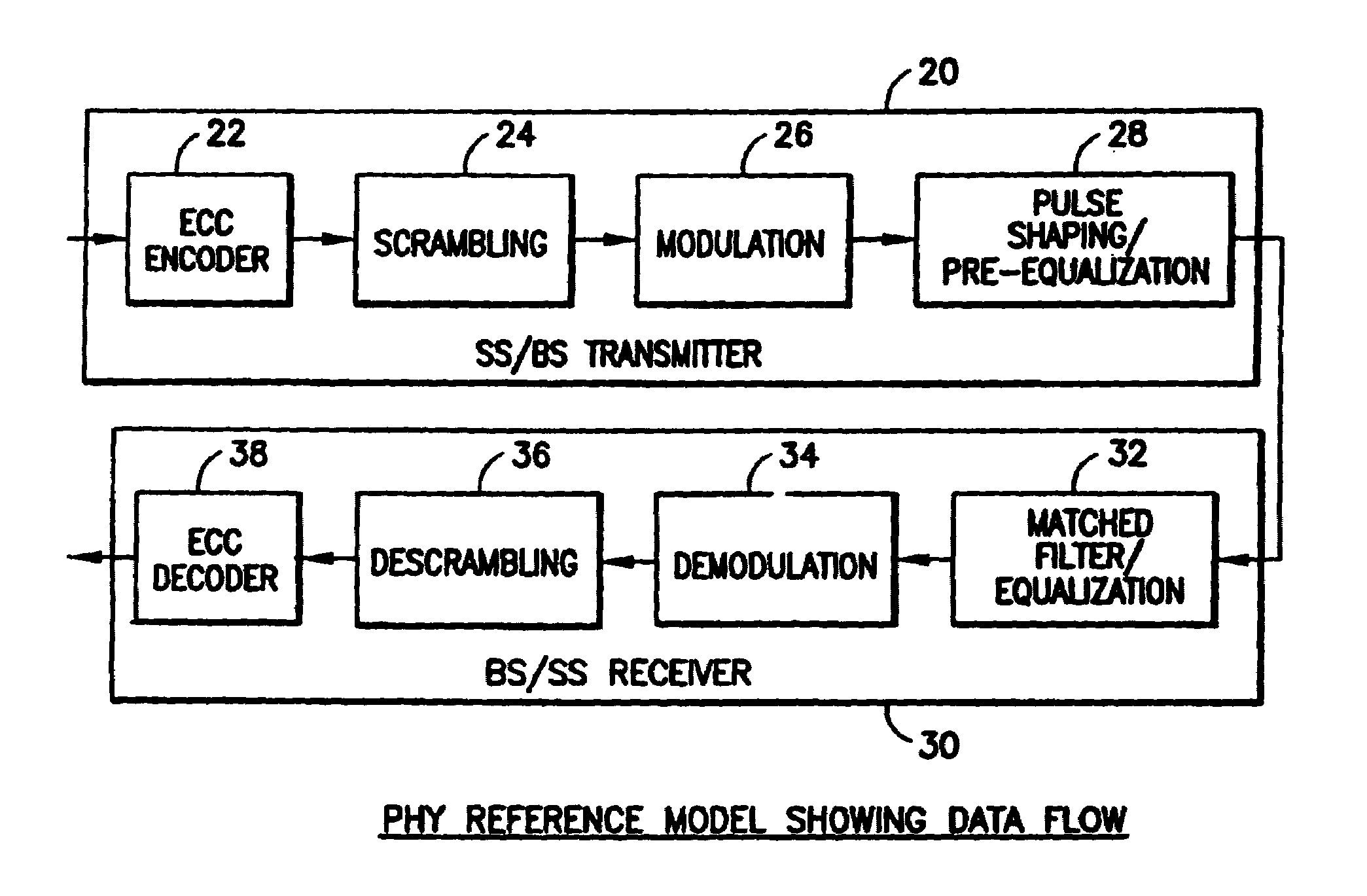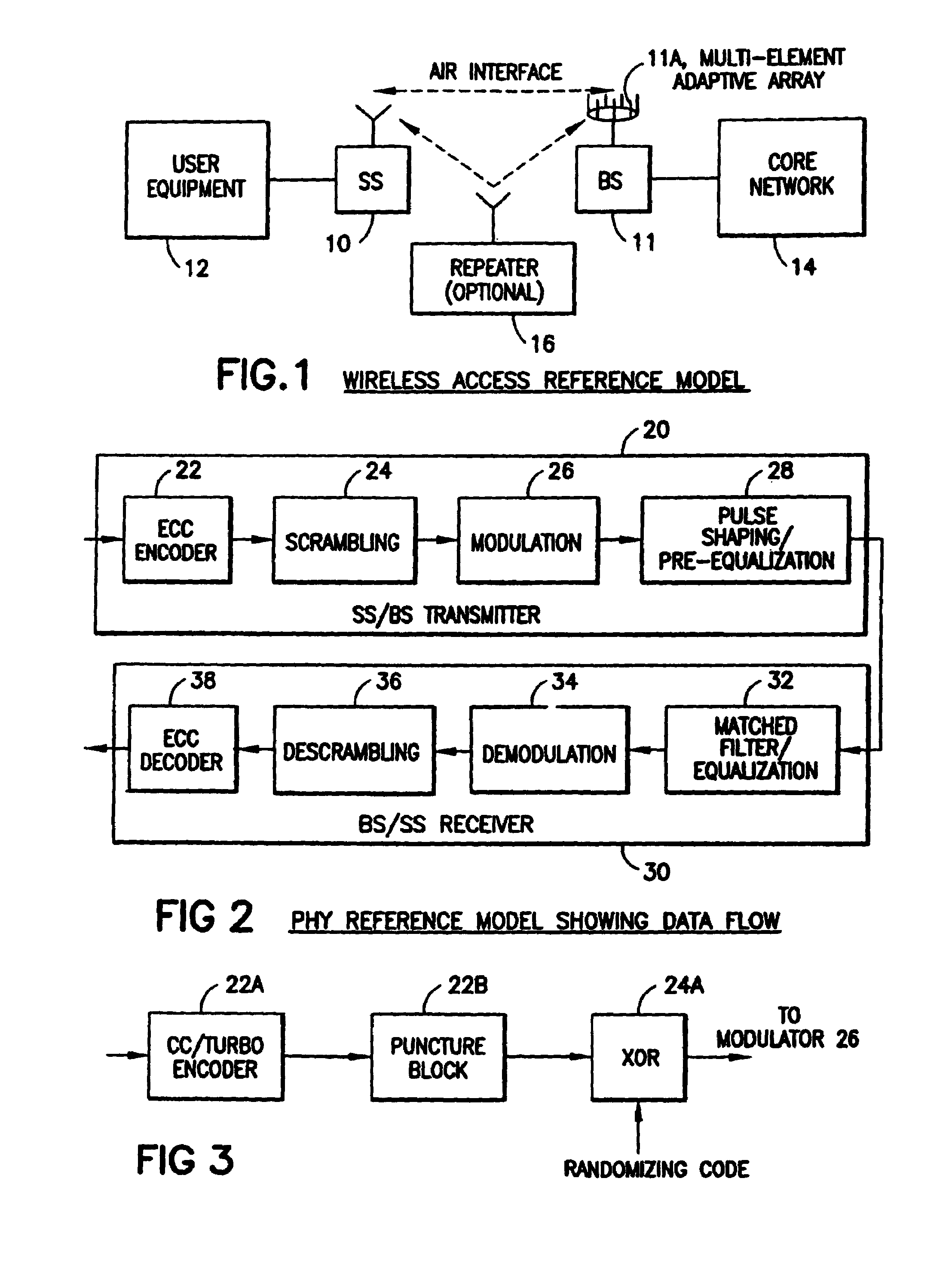Spreading code hopping for synchronous DS-CDMA system to mitigate interference effects
a synchronous ds-cdma and synchronous code hopping technology, applied in the field of wireless communication systems and methods, can solve the problems of difficult design of code sets with such small spreading gain, and achieve the effects of minimizing cross-correlation, improving the performance of all such systems, and reducing interference between adjacent cells
- Summary
- Abstract
- Description
- Claims
- Application Information
AI Technical Summary
Benefits of technology
Problems solved by technology
Method used
Image
Examples
Embodiment Construction
[0025]Disclosed herein is a physical (PHY) system intended for IEEE 802.16 and related standards, although those having skill in the art should realize that various aspects of these teachings have wider applicability. The PHY system is one suitable for implementing the teachings of this invention, although other types of CDMA systems may be used as well.
[0026]The technique is based on ahybrid synchronous DS-CDMA (S-CDMA) and FDMA scheme using quadrature amplitude modulation (QAM) and trellis coding. For a general background and benefits of S-CDMA with trellis-coded QAM one may refer to R. De Gaudenzi, C. Elia and R. Viola, Bandlimited Quasi-Synchronous CDMA: A Novel Satellite Access Technique for Mobile and Personal Communication Systems, IEEE Journal on Selected Areas in Communications, Vol. 10, No. 2, February 1992, pp. 328–343, and to R. De Gaudenzi and F. Gianneti, Analysis and Performance Evaluation of Synchronous Trellis-Coded CDMA for Satellite Applications, IEEE Transactions...
PUM
 Login to View More
Login to View More Abstract
Description
Claims
Application Information
 Login to View More
Login to View More - R&D
- Intellectual Property
- Life Sciences
- Materials
- Tech Scout
- Unparalleled Data Quality
- Higher Quality Content
- 60% Fewer Hallucinations
Browse by: Latest US Patents, China's latest patents, Technical Efficacy Thesaurus, Application Domain, Technology Topic, Popular Technical Reports.
© 2025 PatSnap. All rights reserved.Legal|Privacy policy|Modern Slavery Act Transparency Statement|Sitemap|About US| Contact US: help@patsnap.com



